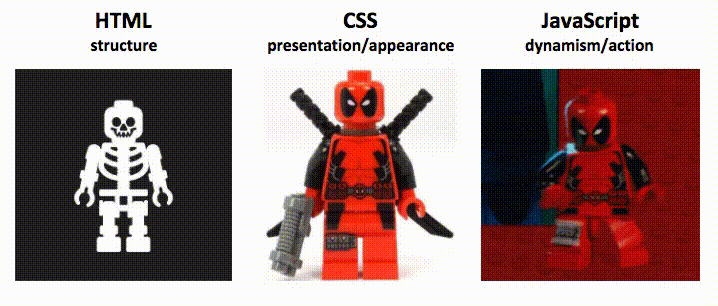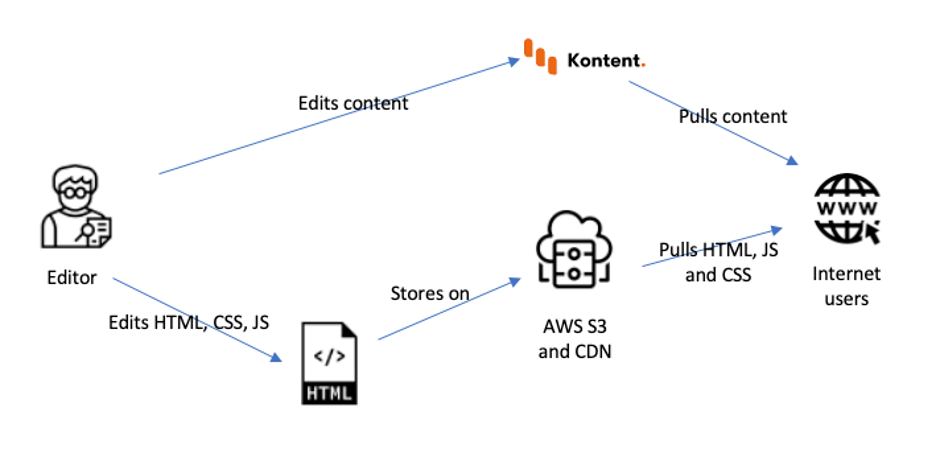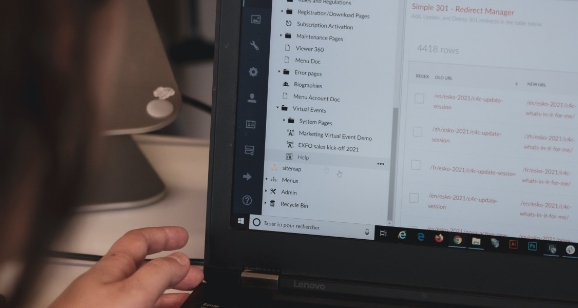There are many ways to build a high performance website, such as having servers that are powerful enough to handle the huge traffic load. However, most of these solutions require a dedicated team to manage the application and servers themselves.
Today, we will be examining on how to build such a site using only HTML, CSS, JavaScript, Amazon Web Services S3 and Kentico Kontent Headless Content Management System (CMS). This will allow you to concentrate on managing the content without having to deal with the applications and servers.
This article will focus on the “what to do” aspect rather than the “how to do it” aspect.
Before we continue, let’s examine the components that goes into creating a website.
HTML, CSS and JavaScript
These three items are the basic building blocks of any modern websites. Think of HTML as the basic structure of a site, CSS (Cascading Style Sheets) is used to control the presentation, layout and formatting while JavaScript controls the behaviour and functions of the different elements.

Amazon Web Services S3
S3 is a storage service provided by Amazon Web Services (AWS). It allows assets such as HTML, CSS, JavaScript and images files to be stored online and access via a browser.
Partnered with AWS CloudFront Content Delivery Network (CDN), it allows these assets to be access worldwide effectively and fast.
Kentico Kontent Headless CMS
A headless CMS is a back-end only content management system that manages the content. The content are accessed through APIs on the front end and can be displayed on any devices.
How does it work?

The editorial team would prepare the HTML, CSS and JS assets and stores it on the AWS S3 storage.
AWS S3 would be configured as a domain that can serves the HTML pages. Together with AWS CloudFront CDN, it will be able to support a very high load of traffic worldwide with high uptime.
As the HTML pages contain the structure of the webpages, the content would come directly from Kentico Kontent in the cloud.
The editorial team would login into Kontent to create and update the content using text or images. Once these are published, these content would be available to be retrieved using APIs.
When the Internet users pulls the HTML from the CDN into their browsers, the APIs embedded inside the HTML will pull the content directly from the Kontent server and display them accordingly.
Pros
- The content from Kontent can be retrieved via APIs and displayed in any platforms that supports it. From websites, mobile apps or even kiosks.
- Content update will only need to be done once and can be displayed in the supported applications or devices.
- High uptime at low application or hosting cost.
Cons
- This is purely meant to be a display solution, if there is a need for more complex business logic, a proper CMS would be needed. Content can still be coming from Kontent, but some development would need to be done.

